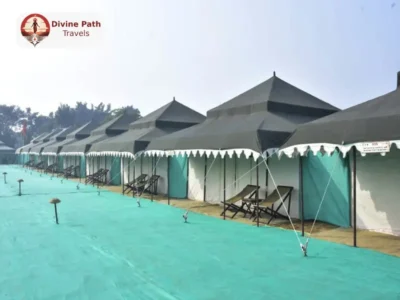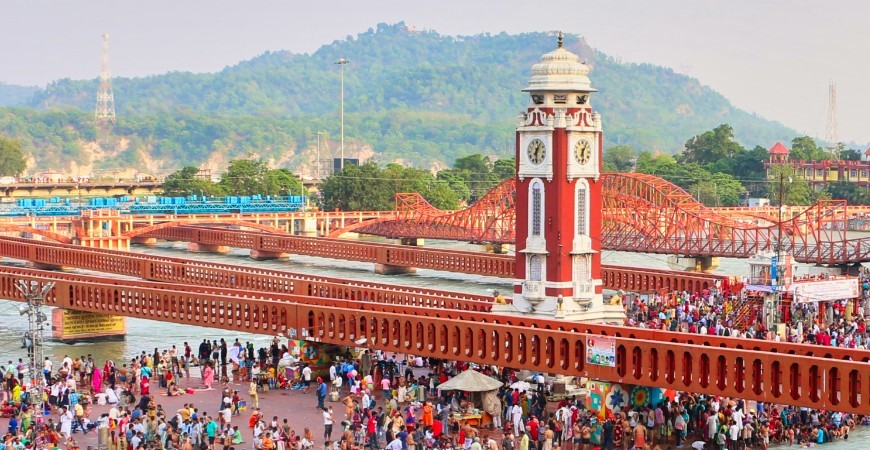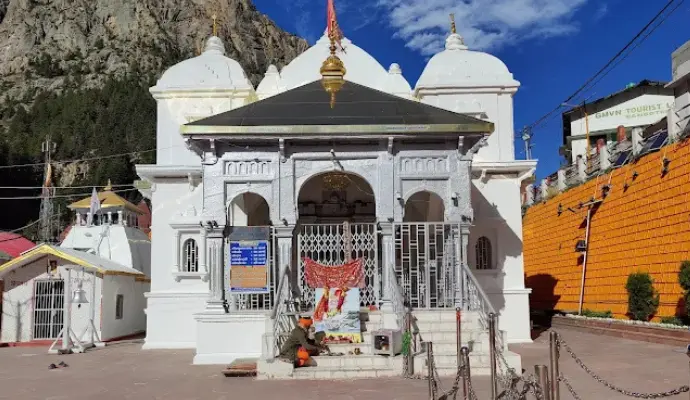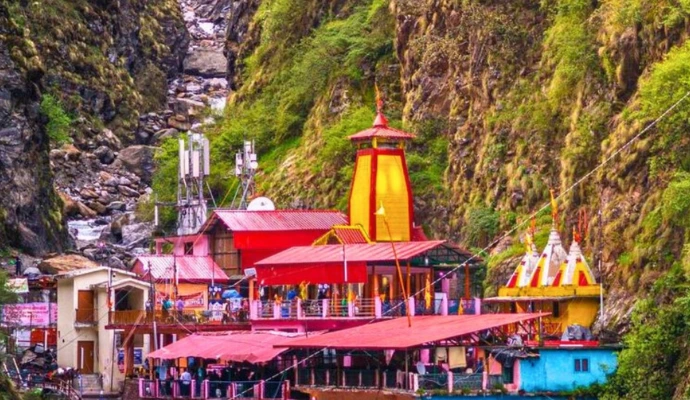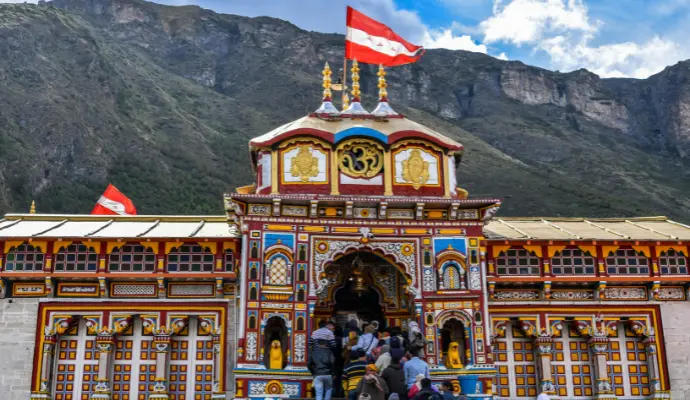Haridwar & Rishikesh Tourism: Sacred Sites

Haridwar & Rishikesh: A Tourist's Guide to Uttarakhand's Sacred Gems
Nestled in the pristine foothills of the Himalayas, Haridwar and Rishikesh stand as beacon destinations for spiritual seekers and curious travelers alike. These ancient cities, gracefully lining the banks of the holy River Ganges in Uttarakhand, India, offer a unique blend of profound religious significance, vibrant cultural experiences, and breathtaking natural beauty. Whether you're seeking salvation, wish fulfillment, or simply a moment of peace, these sacred landmarks provide unforgettable encounters, making them top choices for Uttarakhand tourism and spiritual retreats.
Haridwar: Gateway to the Gods & Holy Ganga Ghats
Haridwar, literally meaning "Gateway to God," is one of the seven holiest places for Hindus. The city buzzes with an intense spiritual energy, most palpable at its revered Ganga ghats and ancient Hindu temples.
Har Ki Pauri: The Sacred Footsteps of Lord Vishnu
No pilgrimage to Haridwar is complete without a visit to Har Ki Pauri, considered one of India's most sacred ghats. Its name translates to "Footsteps of Lord Vishnu," and legend holds that this is where the celestial bird Garuda spilled drops of Amrit (the elixir of immortality). Another profound belief is that King Bhagirath's severe penance here led Lord Shiva to release the torrential Ganga from his locks, allowing her to flow onto the plains.
- What to Expect: Visitors flock to Har Ki Pauri to take a holy dip in the Ganges, a ritual believed to cleanse sins and grant salvation. The atmosphere is a captivating mix of devotion, ancient rituals, and the constant flow of pilgrims.
- Don't Miss: The mesmerizing Ganga Aarti at Har Ki Pauri, held every evening, is an unmissable spectacle of light and sound.
Mansa Devi Temple: The Wish-Fulfilling Goddess of Haridwar
Perched dramatically atop the Bilwa Parvat on the Shivalik Hills, the Mansa Devi Temple is a major draw for devotees seeking blessings. The journey itself is an experience, with a popular cable car (Udan Khatola) whisking visitors up the hillside, offering panoramic views of Haridwar and the Ganges. Alternatively, one can choose to trek up the winding path.
- What to Expect: Dedicated to Goddess Mansa, who is believed to grant the wishes of her devotees, the temple is a vibrant center of faith. A unique tradition involves tying a sacred thread to the branches of a holy tree within the temple complex while making a wish.
- Visitor Tip: The temple can get crowded, especially during festivals like Navratri. Plan your visit during early morning or weekdays for a more serene experience.
Chandi Devi Temple: Goddess Chandika's Powerful Abode
Situated atop the Neel Parvat, on the opposite bank of the Ganga from Mansa Devi, lies the ancient Chandi Devi Temple. Dedicated to the fierce Goddess Chandika Devi, an incarnation of Goddess Durga, this temple is another of Haridwar's revered Siddha Peethas – sacred sites where it's believed that heartfelt wishes come true.
- What to Expect: Accessible by a scenic cable car ride or a trek of about 3 kilometers, the temple offers breathtaking views of the Himalayan ranges and the sprawling city below. It's often visited in conjunction with the Mansa Devi Temple; combination tickets for the cable cars are usually available.
- Travel Smart: Buses and auto-rickshaws are available to reach the cable car base or the starting point of the trek.
Ganga Aarti at Har Ki Pauri: A Soul-Stirring Evening Spectacle
The Ganga Aarti at Har Ki Pauri is an unmissable, soul-stirring experience that defines Haridwar tourism for many. As dusk settles, the ghats come alive with a symphony of chants, ringing bells, and the fragrance of incense.
- What to Expect: Priests perform meticulously choreographed rituals with large, flaming lamps, offering prayers to the River Ganges. The air is thick with Vedic hymns, creating an intensely divine and peaceful atmosphere. Witness thousands of flickering diyas (earthen lamps) with flowers being floated down the river by devotees, creating a magical, glittering spectacle.
- Viewing Tips: Arrive early to secure a good viewing spot. Be prepared for large crowds, especially during peak season and festivals.
Rishikesh: The Yoga Capital of the World & Spiritual Retreat
Further upstream from Haridwar, Rishikesh is renowned as the "Yoga Capital of the World" and offers a slightly more tranquil, yet equally spiritual, ambiance. It's a hub for ashrams, meditation centers, and adventure activities, all set against a backdrop of stunning natural beauty, making it a popular choice for spiritual retreats in India.
Neelkanth Mahadev Temple: Where Lord Shiva Conquered Poison
Nestled amidst dense forests and picturesque mountains, about 32 kilometers from Rishikesh, the Neelkanth Mahadev Temple is a significant Shaivite shrine. It commemorates the mythological event of Samudra Manthan (the churning of the cosmic ocean), where Lord Shiva consumed the deadly poison Halahala to save the universe, turning his throat blue (Neelkanth).
- What to Expect: The temple, with its vibrant and intricate carvings depicting the Samudra Manthan, attracts a large number of pilgrims. The journey to the temple itself is scenic, whether by road or by undertaking a popular trek from Rishikesh.
- Best Time to Visit: While open year-round, the temple sees huge footfalls during Maha Shivratri and the month of Shravan (July-August). The weather is pleasant from October to March.
Trimbakeshwar Temple (Tera Manzil Temple): Rishikesh's Multi-Storied Marvel
A prominent landmark near the iconic Laxman Jhula in Rishikesh, the Trimbakeshwar Temple, also known as Tera Manzil Temple (13-Storey Temple), is an architectural delight.
- What to Expect: Each of its thirteen floors houses shrines dedicated to various Hindu deities, with the main shrine of Lord Shiva (Trayambakeshwar – the three-eyed lord) at the top. As you ascend, you are rewarded with increasingly panoramic views of the Ganges and the surrounding landscape.
- Visitor Insight: It's a great place to witness the diversity of the Hindu pantheon under one roof and offers excellent photo opportunities from its upper levels.
Triveni Ghat: Sacred Confluence & Rishikesh's Evening Aarti
Triveni Ghat is the largest and most well-known bathing ghat in Rishikesh, situated at the holy confluence of three legendary rivers: the Ganga, the Yamuna, and the mythical Saraswati. A dip at this sacred spot is believed to wash away sins.
- What to Expect: The ghat is a bustling place, especially during early mornings when pilgrims take their holy baths, and in the evenings for the Maha Aarti. Similar to the Ganga Aarti in Haridwar, the evening ceremony at Triveni Ghat is a captivating spectacle of light, sound, and devotion.
- Experience the Aura: The Maha Aarti here fills the air with spirituality and mysticism, offering a profound sense of peace as lamps are set afloat on the river against the backdrop of chanting and devotional music.
Plan Your Spiritual Journey to Haridwar & Rishikesh
A journey through these sacred sites of Haridwar and Rishikesh promises not just a glimpse into ancient traditions and profound faith, but also an opportunity for personal reflection and rejuvenation amidst stunning natural landscapes. Plan your visit to experience the divine charm and tranquil allure of these Himalayan spiritual havens.
